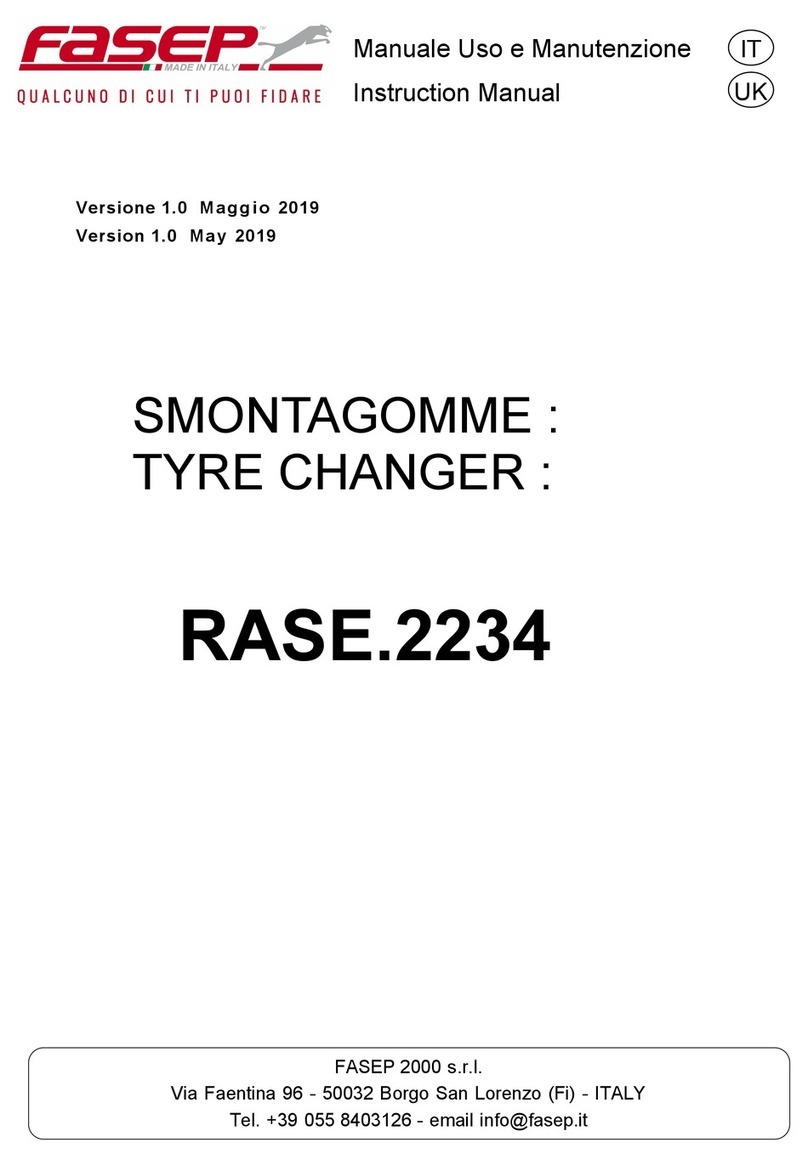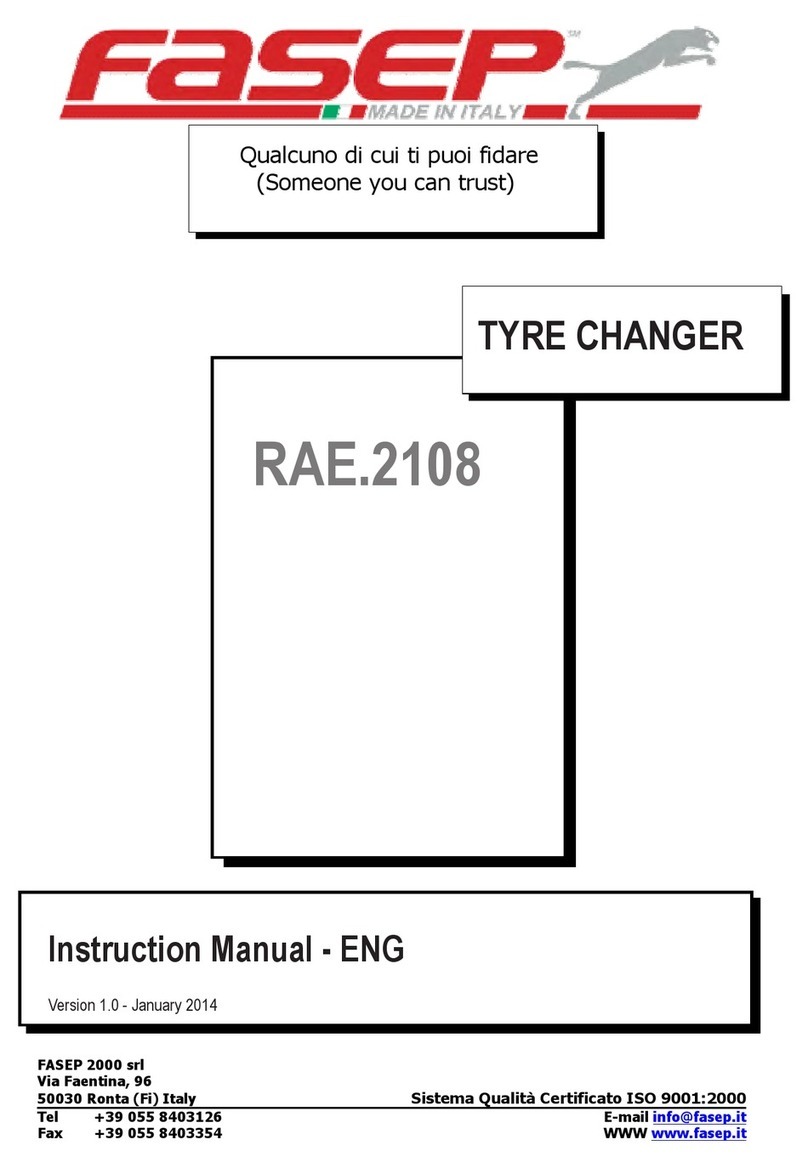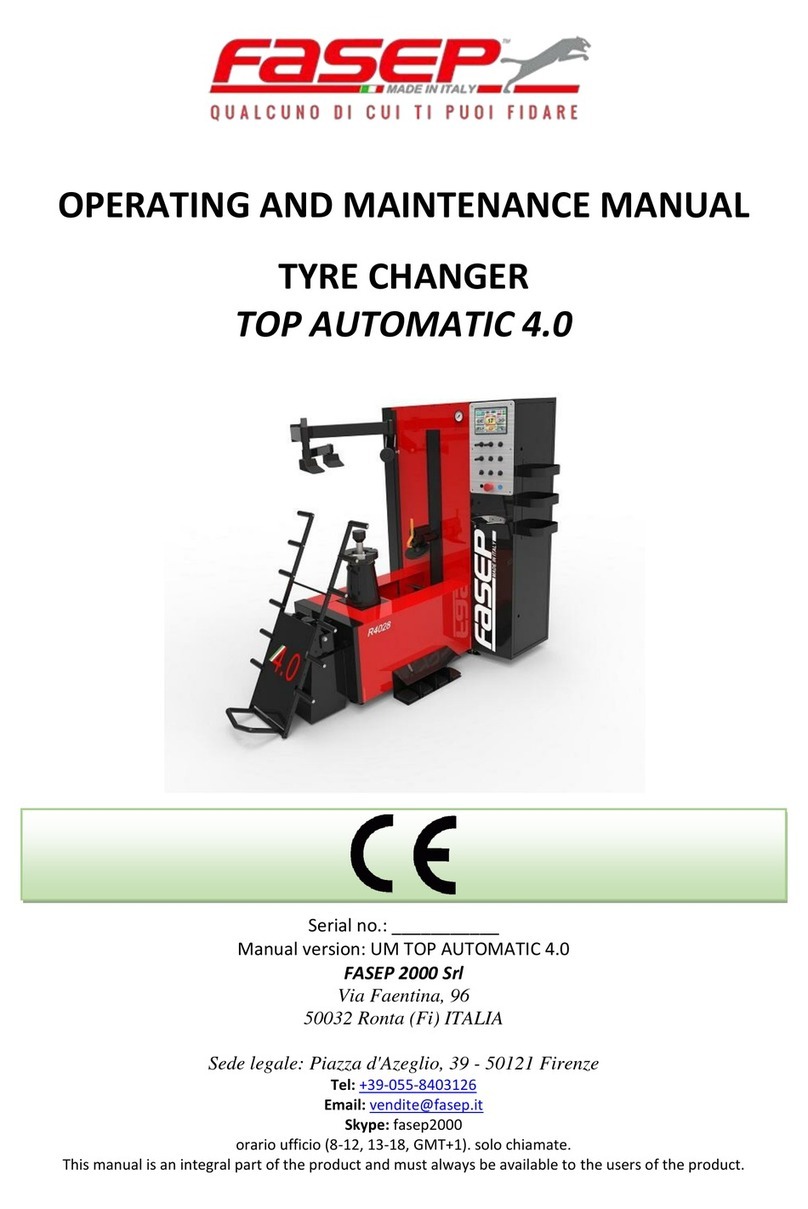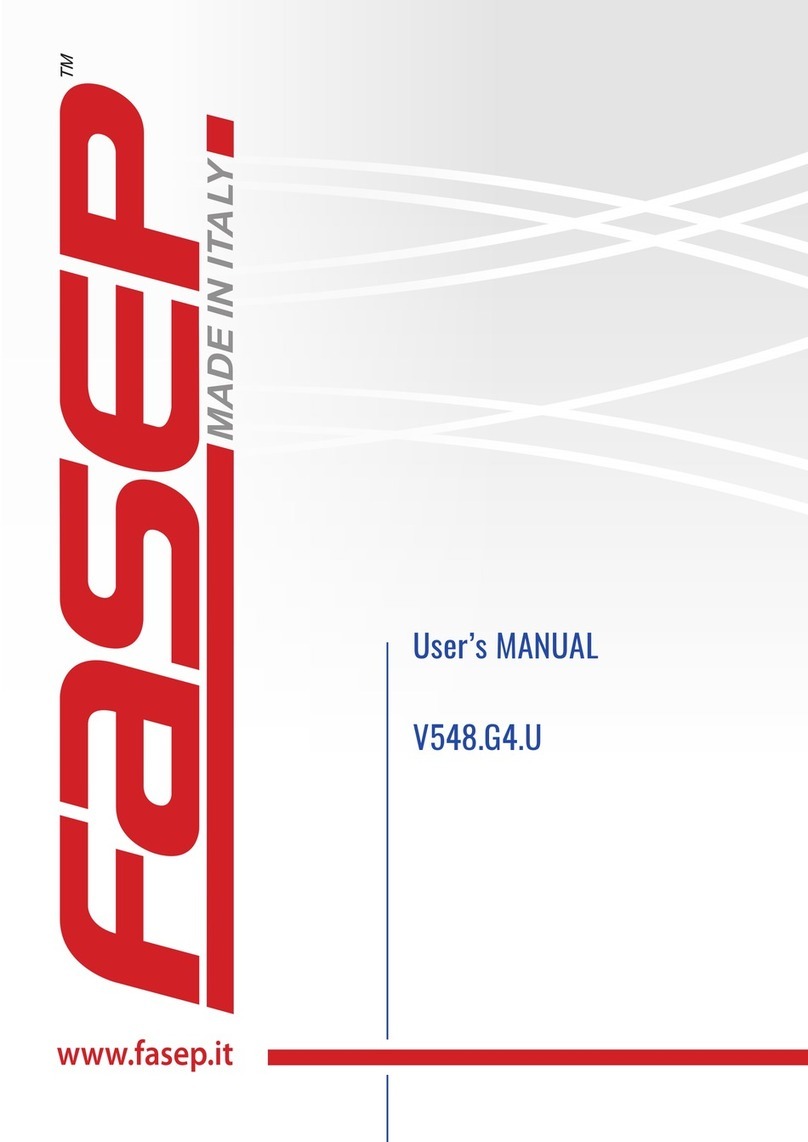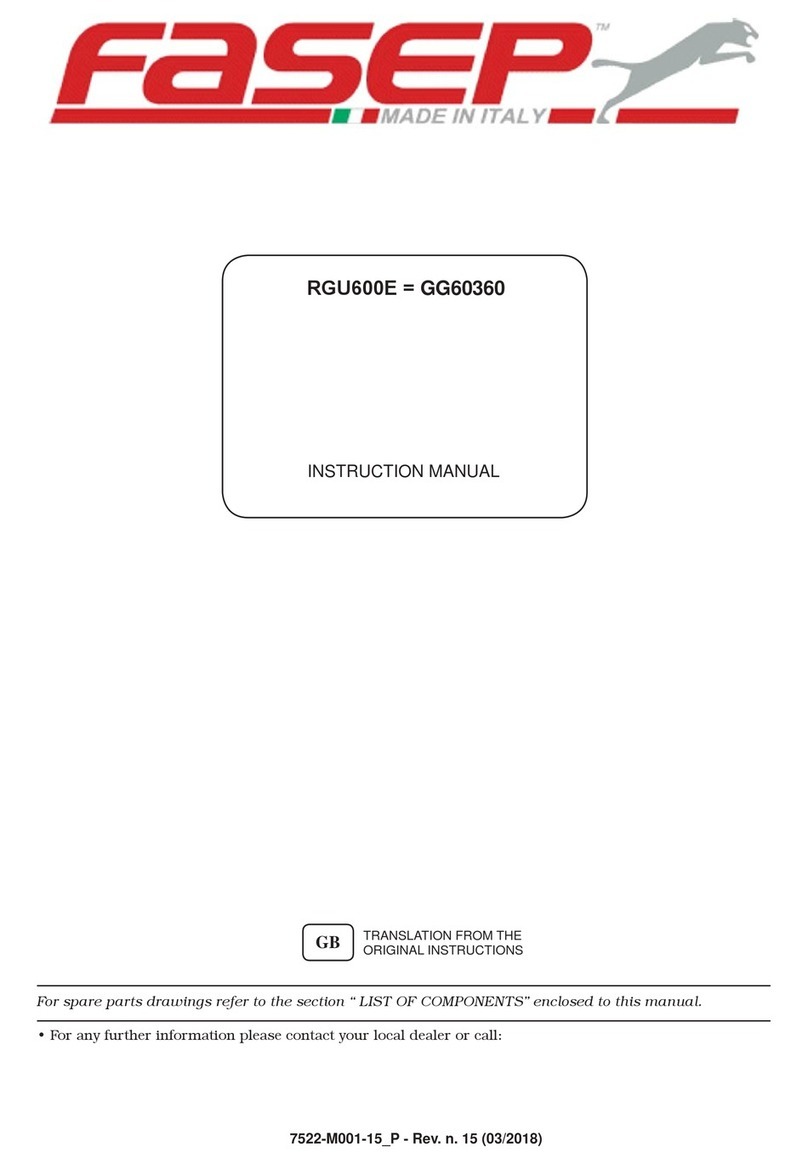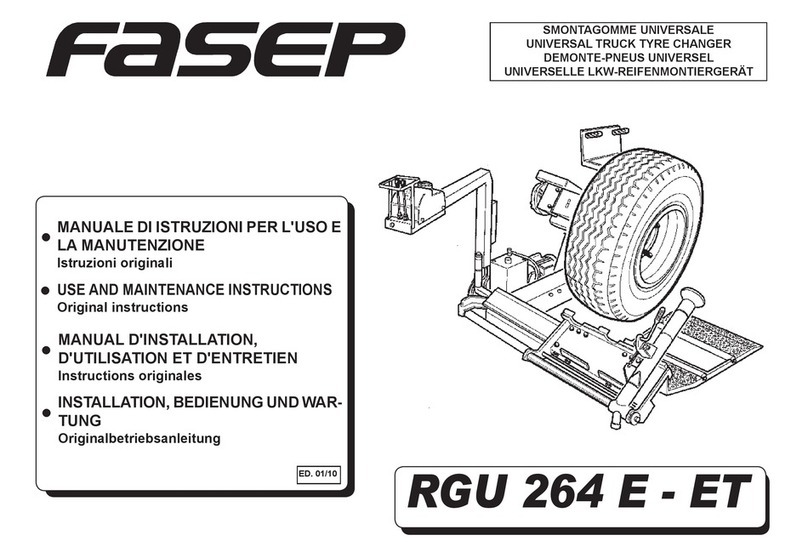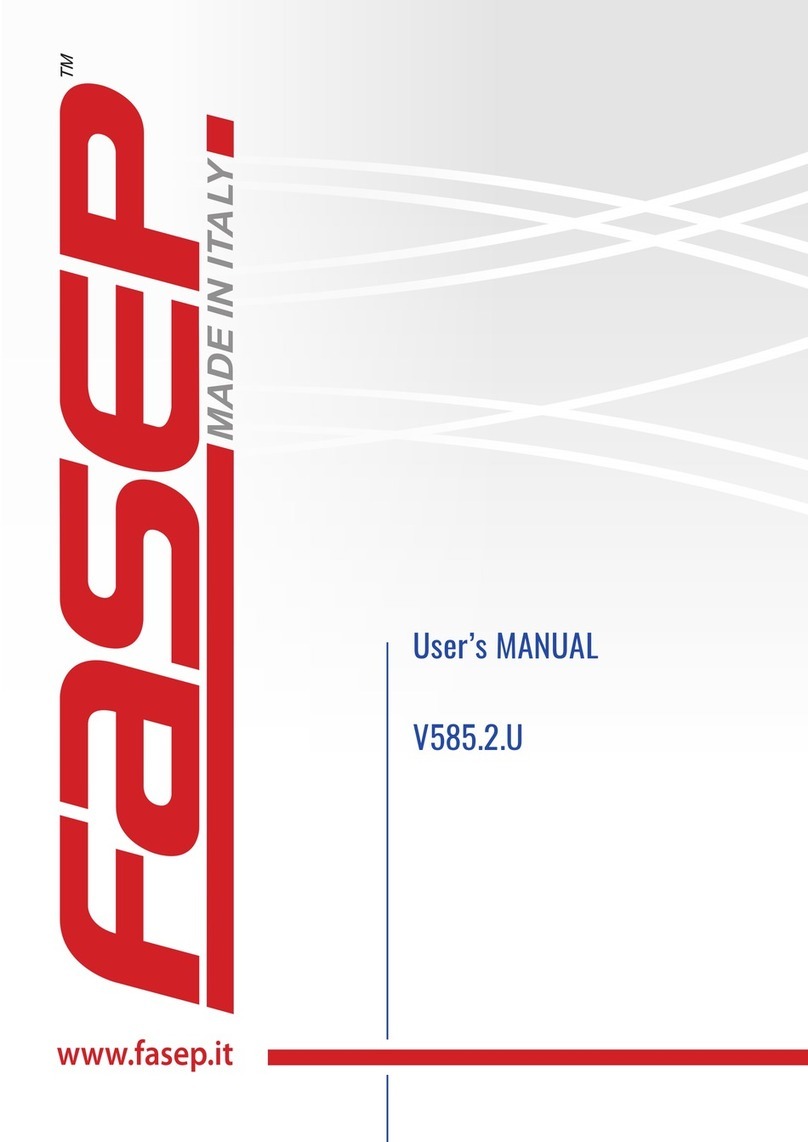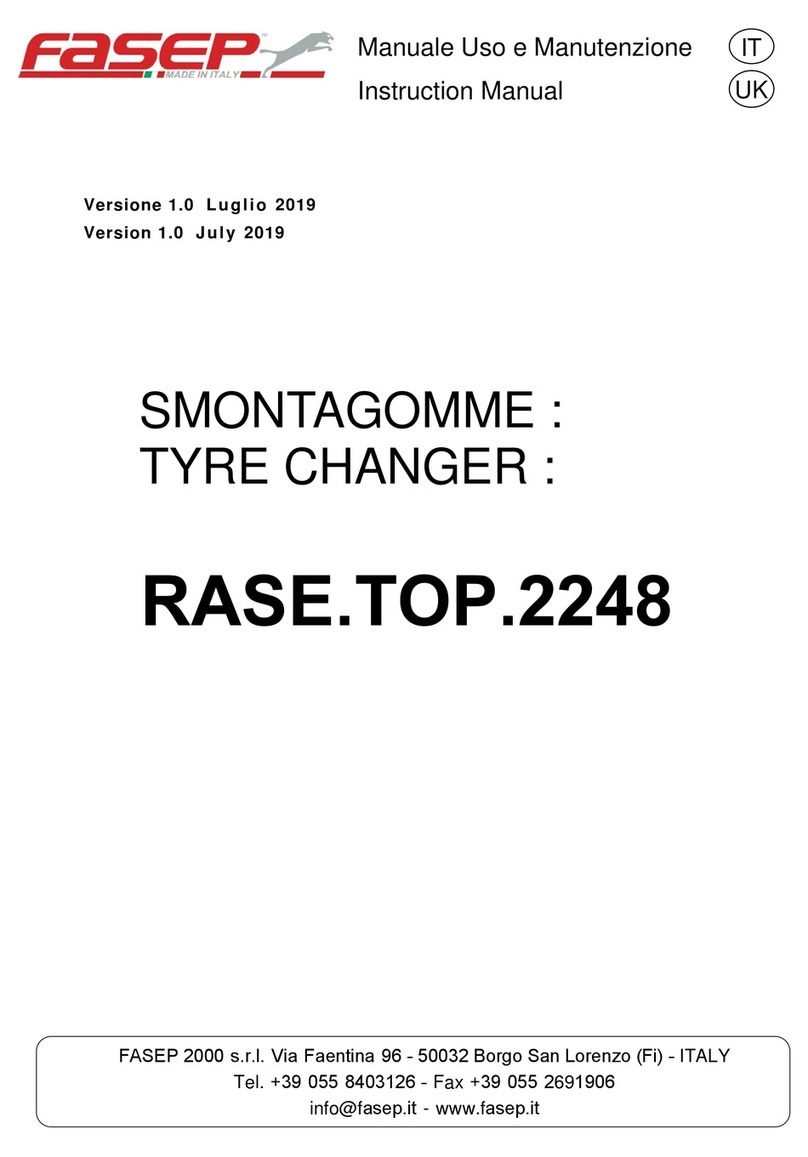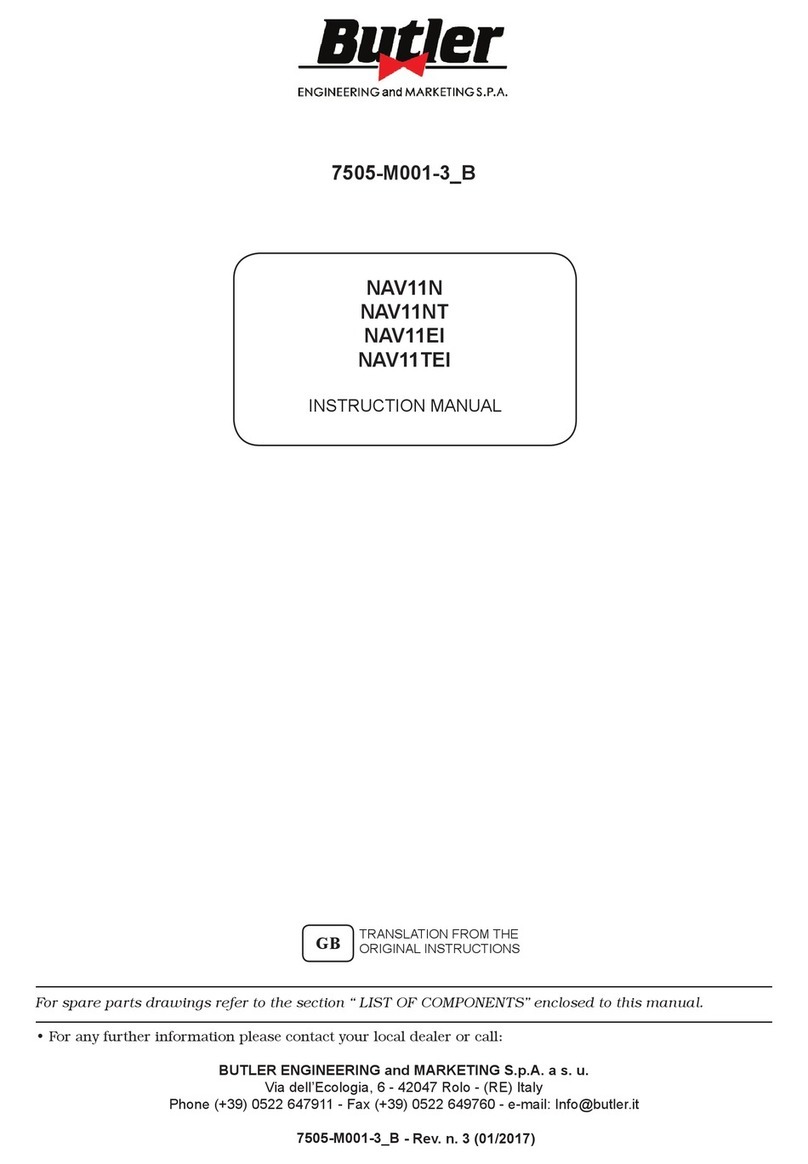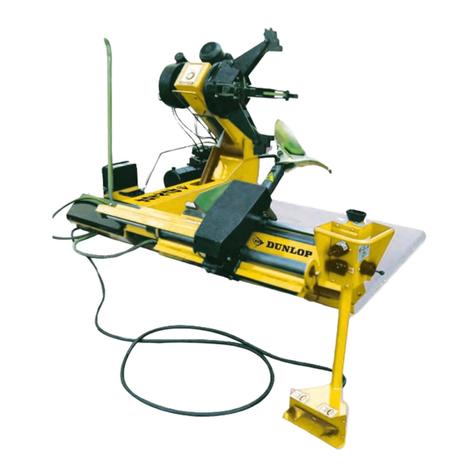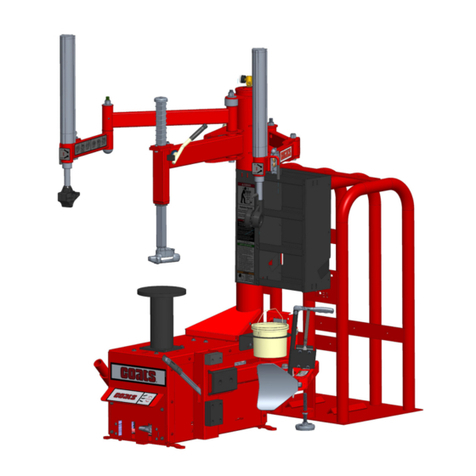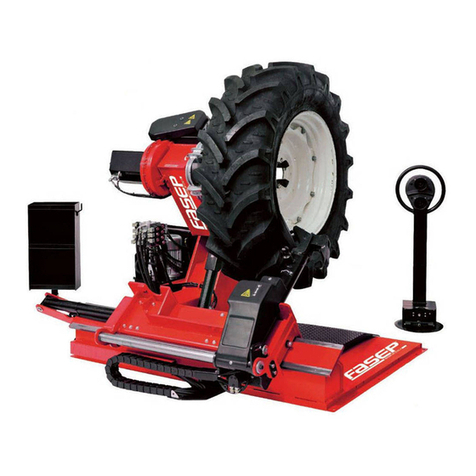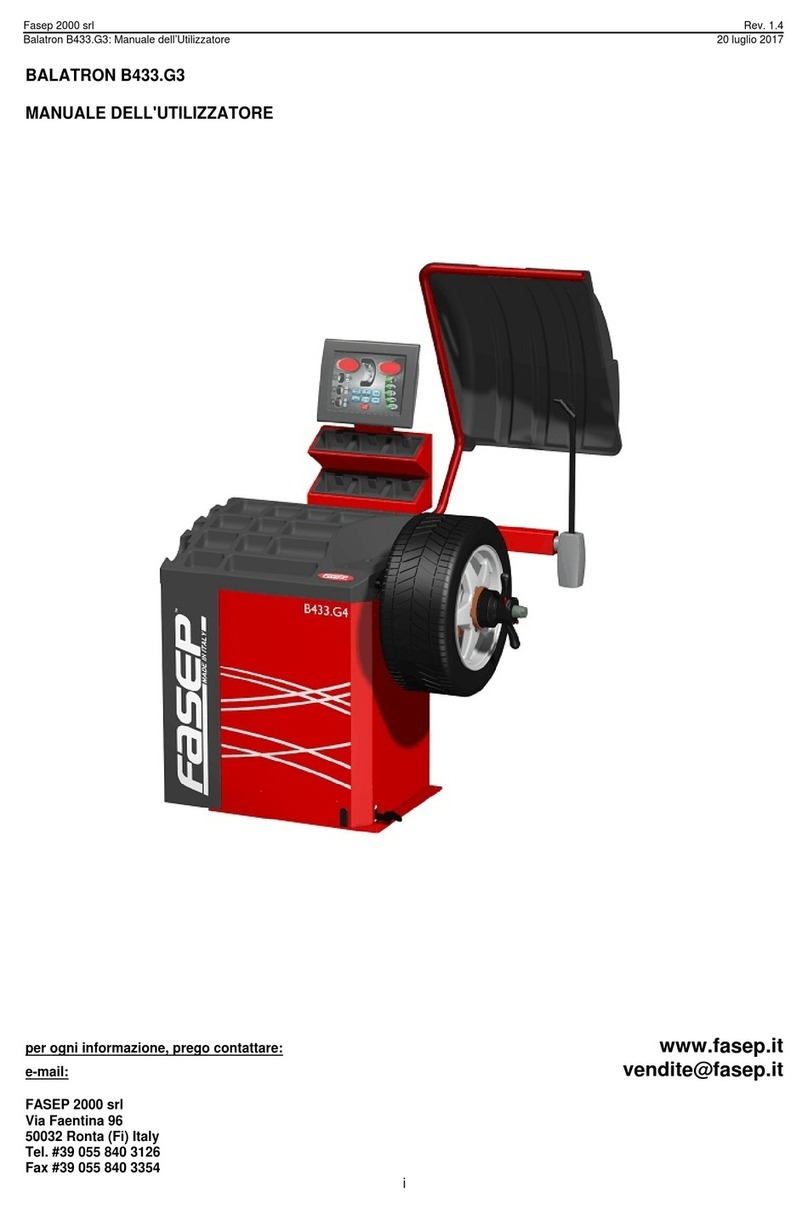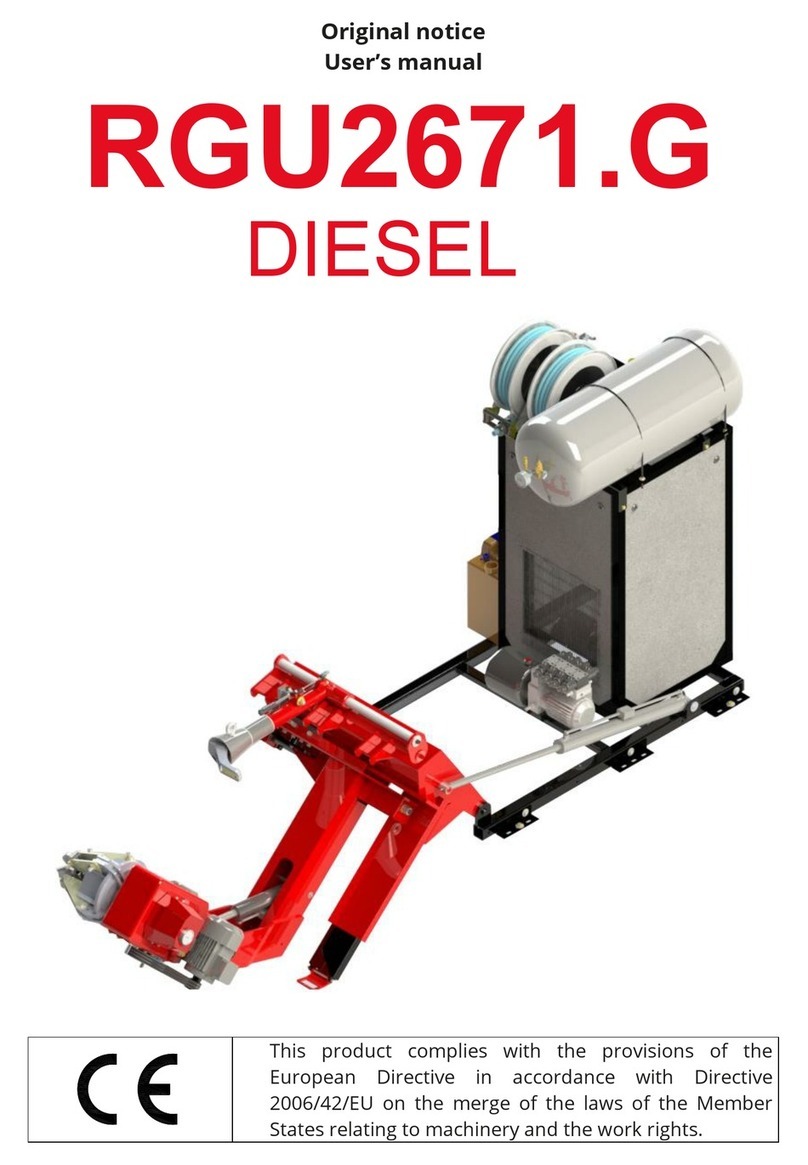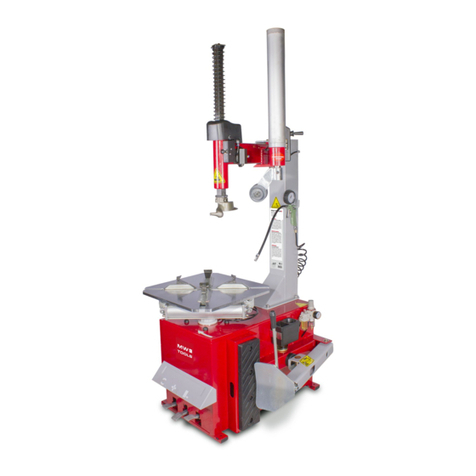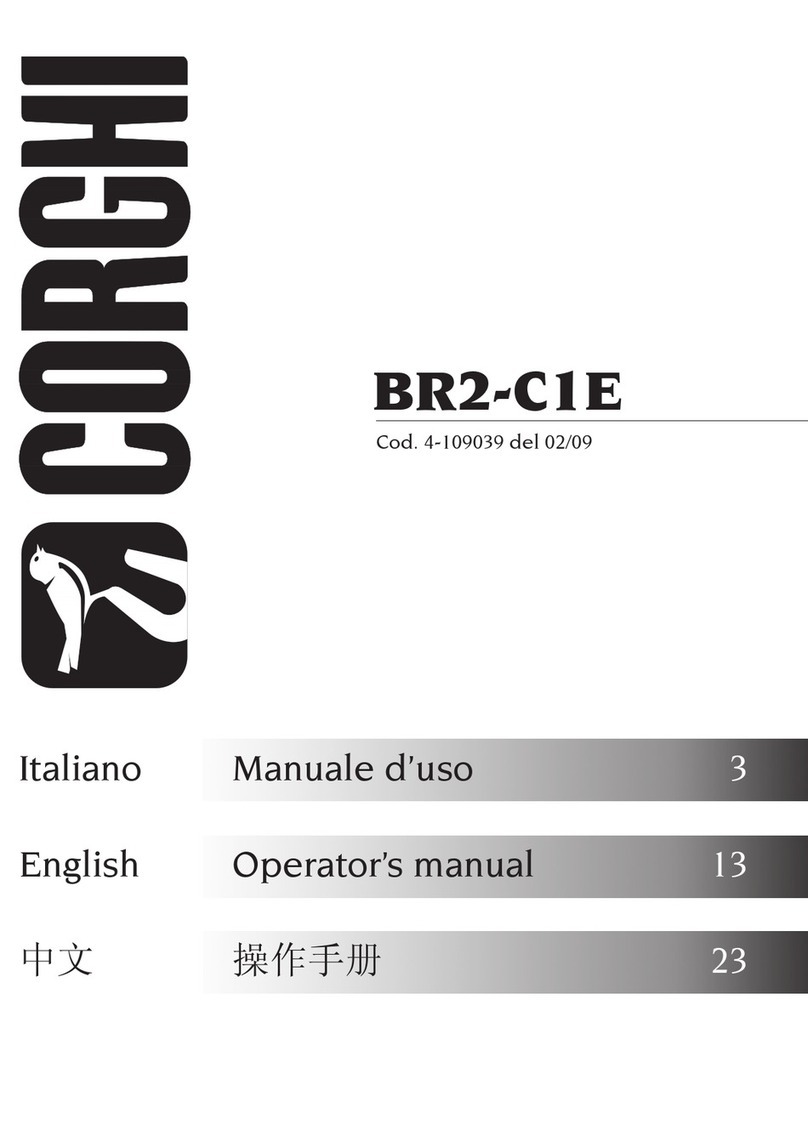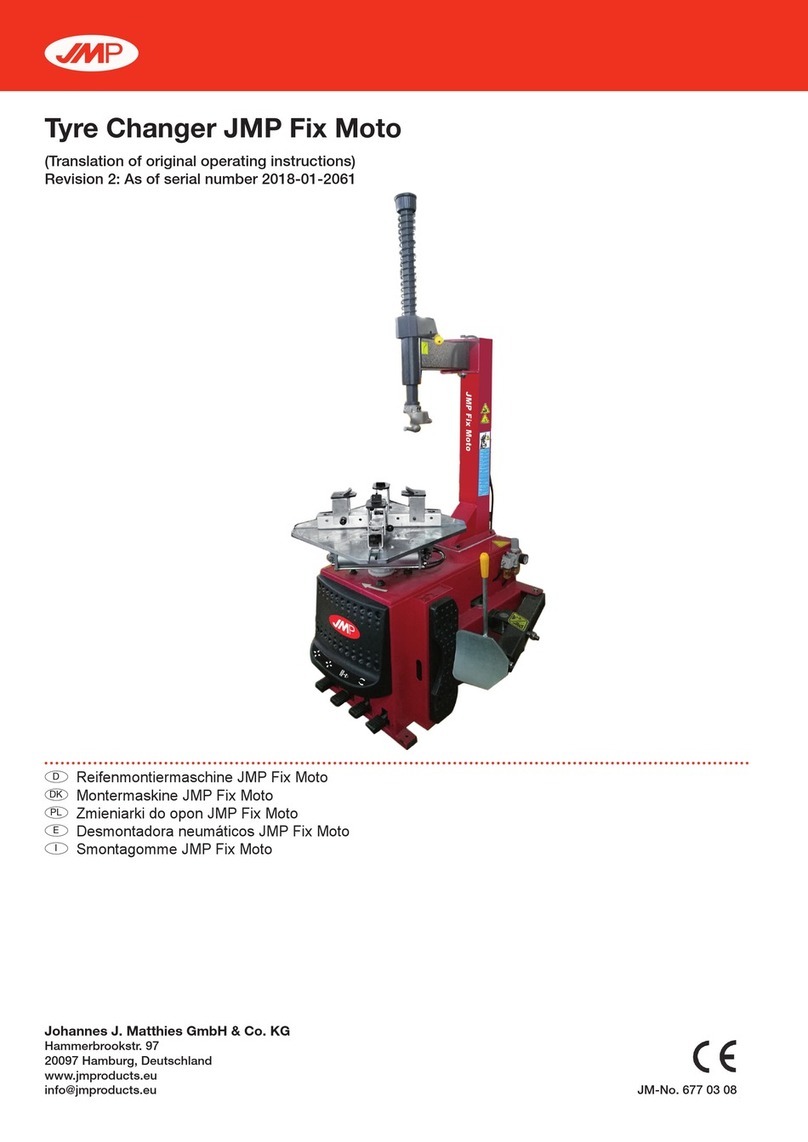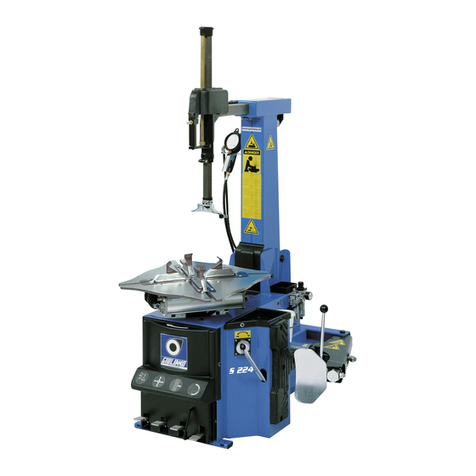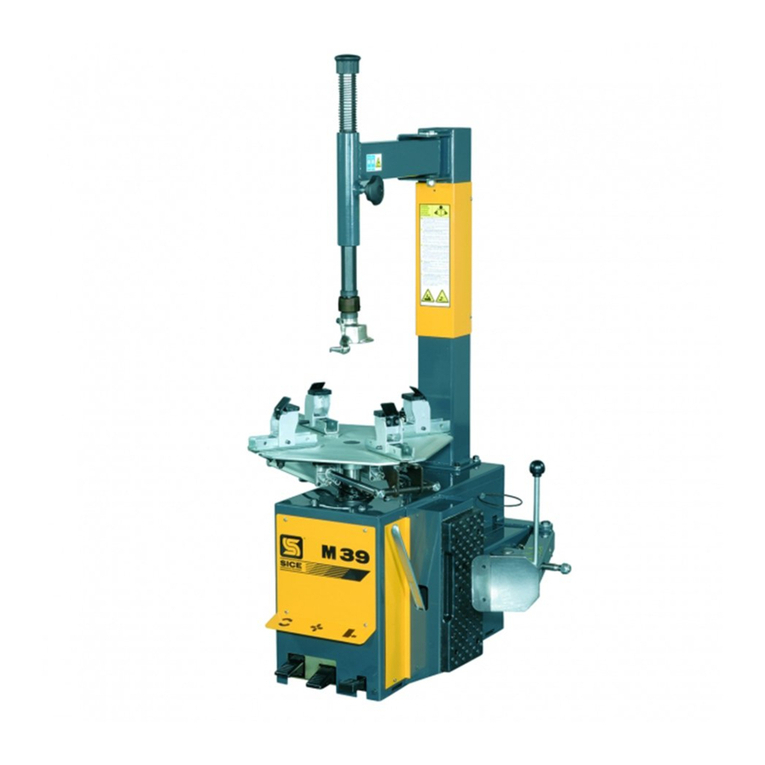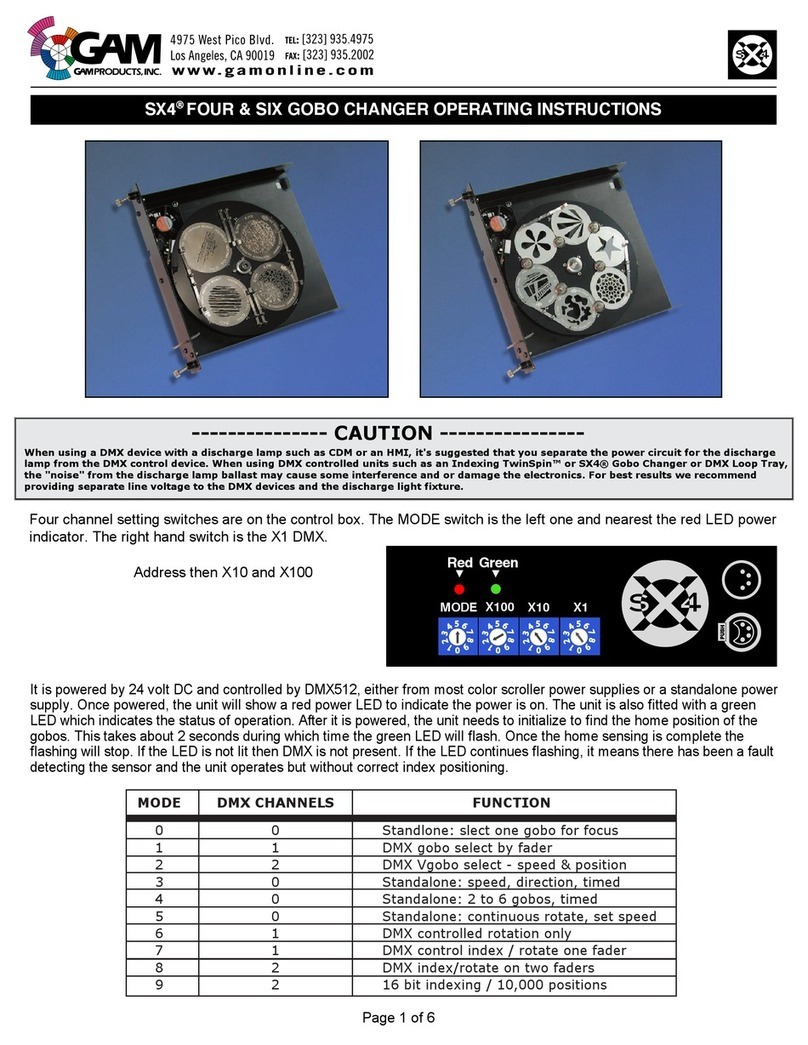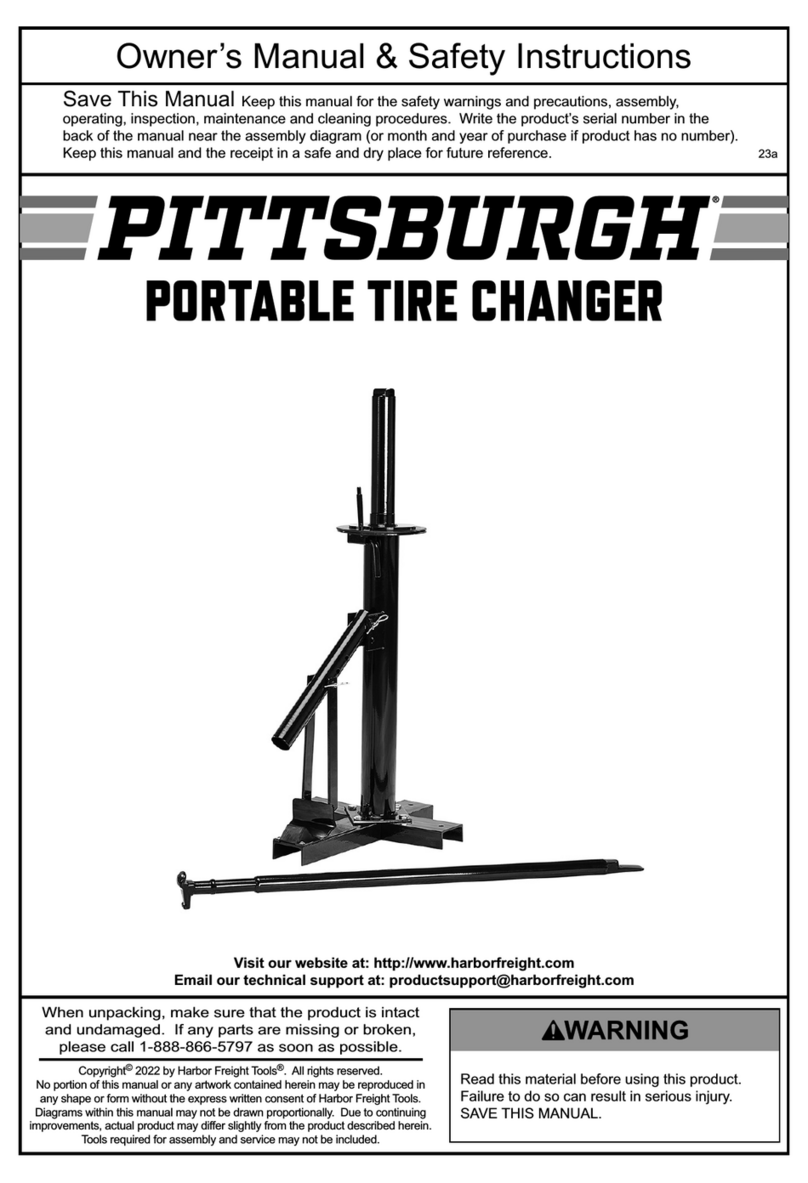
10
8
CONTROLS DESCRIPTION
The mobile control stand (g. C) enables the operator to work at any position around the machine. On this mobile
stand the following controls are located:
- the joystick 1(1, g. C) in position A let the chuck holder move away from the tool holder; in position Bit moves
it in opposite direction; in position Dit moves the chuck arm holder rightwards and the tool holder leftwards
simultaneously (so they get close to each other); in position E it moves the chuck arm holder leftwards and the
tool holder rightwards simultaneously (so they get far from each other).
- The joystick 2 (2, g. C) controls all the tool’s movements; in position F (up) it brings the tool arm to “rest
position”; in position G (down) it brings the arm in “work position”; in position H(left) it controls 180° anti-clockwise
rotation of the tools; in position I(right) it controls opposite rotation so bringing the tools in the initial condition.
- Switch 3 (3, g. C) if pushed up to position L it makes the chuck rotate at the double of the speed set when
selecting position M(up).
- Switch 4 (4, g. C) let the chuck holder arm and the tool holder arm move at the same time either at high speed
(pos. N) or at reduced speed (pos. O)
- Switch 5 (5, g. C), if pushed up to pos. P, it let the chuck jaws open (LOCK), if pushed down to pos. Qit let
the chuck jaws close (UNLOCK)
- Switch 6 (6, g. C) let the chuck move up (pos. R) and down (pos. S)
- The balance pedal (7, g. C) let the chuck rotate in the direction shown by the arrow stuck on both pedal sides
(Tand U).
REMARKS: all the controls available in the mobile column are very sensitive, so granting the smallest movement
with the highest precision.
On the tyre-changer, knob (19, g. D) is also available for replacing the mounting tool whenever necessary (f.i. to
install the RT tubeless roller tool)
D
18
19
17
C
P
R
S
6A
B
D1E
L
M
3F
5
Q
N
O
4
H
G
I
2
U
T
7

